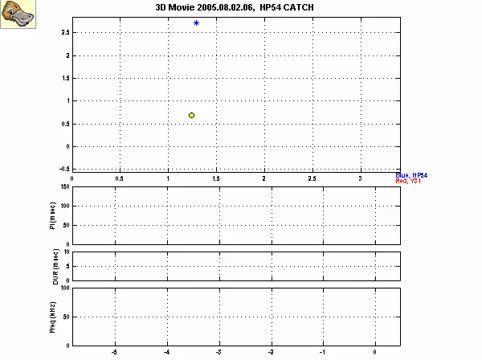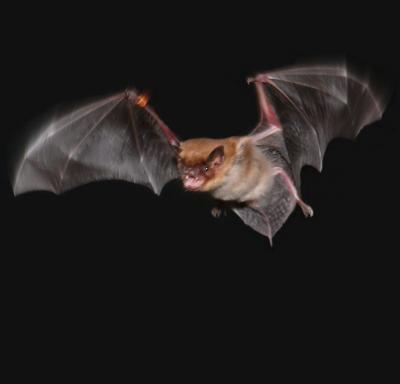While some animals that forage in groups are known to emit calls to attract others towards food sources, the FMB is used to repel, not attract, other bats.
"Despite decades of study, many things about common bat behaviors such as foraging remain mysterious," says Wright. "We were able to study a social call that is likely occurring thousands of times a night all over North America during the summer months, yet had not been described or studied before now."
The researchers discovered only male big brown bats emitted the FMB, possibly to advertise their dominance or claim their territory. Female bats did not emit FMBs. That may be because females form close associations with their roost mates and may forage near familiar individuals, while males often roost alone or in small bachelor colonies and may be less familiar with others foraging nearby.

In this animated graphic of bats' calls in flight, two bats are represented by different colors, red and blue. The bats' movements and vocalizations have been slowed by a factor of 10. The top graph in the movie traces the bats' movements around a flight room where the study took place. Each circle on the bats' paths indicates a vocalization. The frequency-modulated bout vocalizations are in green. The prey is a tethered mealworm in the center of the room, represented by a yellow circle.
(Photo Credit: Genevieve S. Wright, University of Maryland)

University of Maryland researchers have learned that male big brown bats in flight use a special call, different from the echolocation calls they use for navigation, to warn other foraging males away from insect prey that they are claiming for themselves.
(Photo Credit: Jessica Nelson, Auditory Neuroethology Laboratory, University of Maryland)
Source: University of Maryland